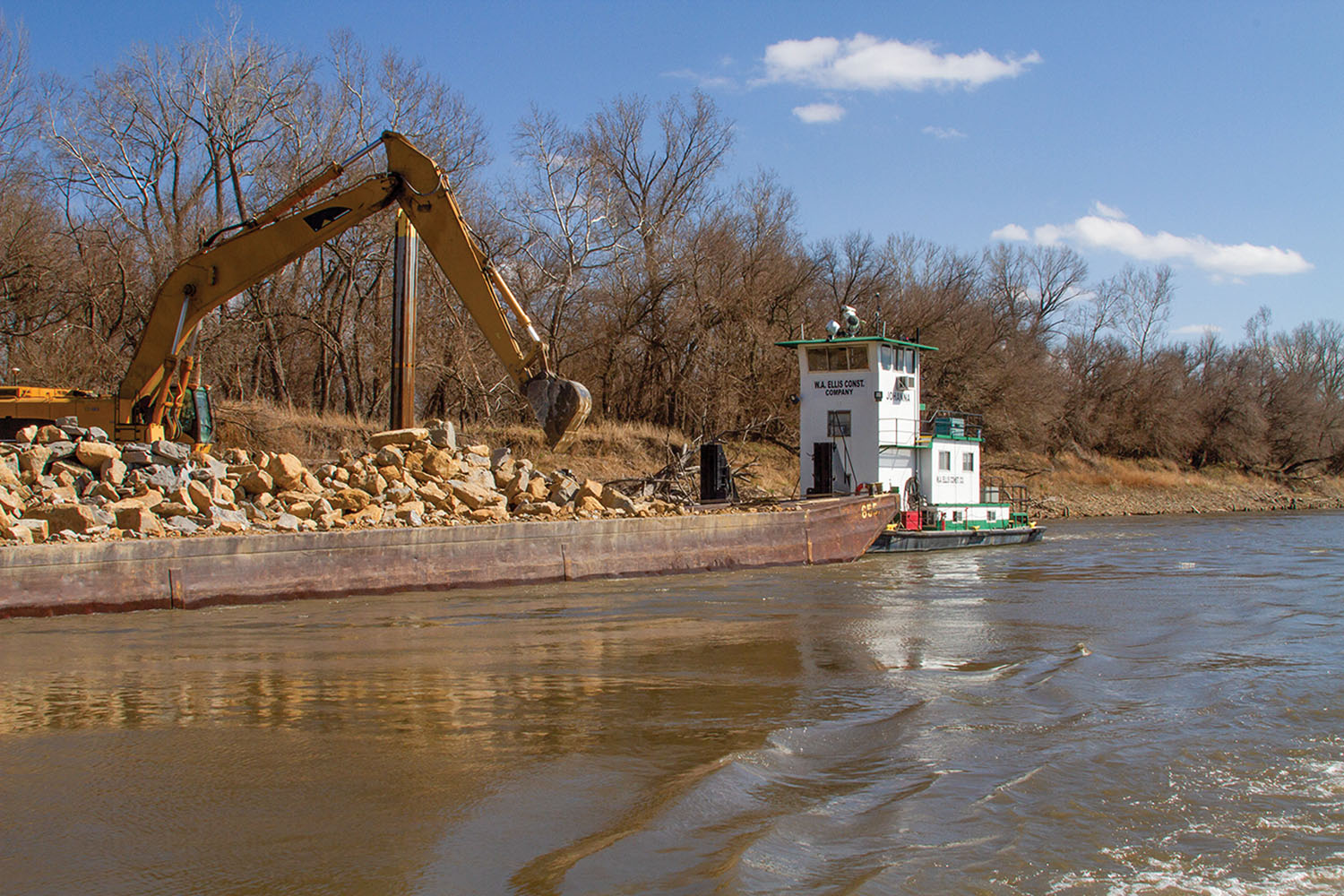By James F. Lowe
Kansas City Engineer District Public Affairs
The flood of 2019 made apparent the need for extensive repairs on the Missouri River training devices–dikes and revetments–that direct the downstream flow into the navigation channel to keep it deep enough for boat traffic and generally clear of debris.
The Bipartisan Infrastructure Law allocated $248 million to repair those structures that are on the lower stretch of the Missouri River. For the Kansas City District, responsible for repairs from Rulo, Neb., to the mouth of the river near St. Louis, this represented a monumental increase in funds available. In a normal year for the last 20 years, the district spent $10 million to $20 million on similar repairs.
Navigation on the Missouri River carries critical cargo. Farmers move their soybeans, corn and other goods down the river while on the upriver route, navigators move fertilizer, seeds, coal, giant windmill arms and other materials take advantage of the water for efficient use of their transportation dollars. The repairs being made keep this cargo flowing.
“After the additional damage to the structures in 2019, the BIL money helped repair the damage from the flooding and also is allowing us to catch up with the backlog from previous years of limited funding,” said Dane Morris, program manager for navigation reliability for the Kansas City Engineer District.
Morris noted that the river is already showing signs of success with fewer areas of shoaling or sand and debris buildups that cause problems for navigation.
“A key message for us and our partners is that this increased funding for maintenance activities is having a positive effect. We’ve already requested to increase our maintenance efforts in future budget requests,” said Col. Travis Rayfield, commander of the Kansas City District. “I’m proud of recent efforts where we have been able to keep waterborne transportation moving on the Missouri River through both drought conditions and recent flooding. We work hard with our partners across Iowa, Nebraska, Kansas and Missouri, to include other agencies like the Coast Guard, to keep the navigable waterway open and support our national economy.”
The Missouri River is navigable up to Sioux City, Iowa, with that access making the Missouri River a major inland waterway. The Omaha District is working the repairs north of Rulo to Sioux City.
Increased traffic on the river represents less traffic on highways. One dry barge carries the equivalent of 65 to 70 truckloads. Multimodal transport with heavy weights of goods traveling on the river, then connecting with truck and rail transportation, provides value to the transporters and eventually to the consumers who benefit from lower transportation costs and less pollution of our environment.
Effective contracting has led to awards of $163 million to commercial companies for repair work on the river structures in the first six months since Congress allocated the funding. The Kansas City District also has working boats with barges, cranes and experienced crews to conduct targeted repairs. The remainder of contracting actions using the BIL funding will be executed over the next two years.
“We have industry partners with specialized capabilities to make the needed repairs to the rock river training structures with locally sourced rock,” said Mike Chapman, technical lead for BIL funded repairs. “Our teams provide near real-time riverbed surveys to show where shoaling is occurring. The surveys are used in conjunction with ongoing structure assessments to prioritize repairs so that flows are properly confined in the navigation channel and shoaling issues corrected.”
Caption for photo: W.A. Ellis Construction Company contractors work to make repairs to river training structures on the Missouri River on a floating barge near Atchison, Kansas, on April 5, 2023. (Photo by Jessica Schaeffer, Kansas City Engineer District)


